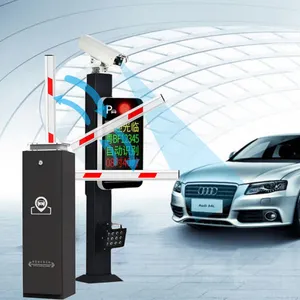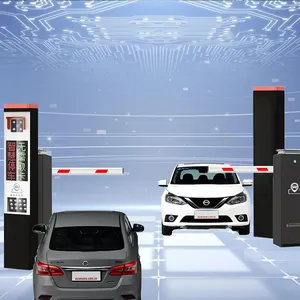
All categories
Featured selections
Trade Assurance
Buyer Central
Help Center
Get the app
Become a supplier

(3500 products available)
































Manual Puzzle Parking
In a manual puzzle parking system, the parking attendant or driver manually operate the parking mechanism. They slide and shift the parked cars horizontally and vertically, creating enough space to park or retrieve vehicles. This type relies on human skill and coordination to arrange cars efficiently, maximizing space utilization within the parking area.
Semiautomatic Puzzle Parking
A semiautomatic puzzle parking system combines manual operation with some mechanical assistance. While a parking attendant or driver still performs the sliding and shifting of vehicles, they are aided by electrically or hydraulically powered mechanisms. These mechanisms can include lifts, conveyors, or pushing systems that reduce the physical effort required and enhance the overall efficiency of parking and retrieving cars.
Fully Automatic Puzzle Parking
A fully automatic puzzle parking system is entirely automated, eliminating the need for human intervention in vehicle operations. Cars are parked and retrieved automatically using advanced technologies like lifts, rotating platforms, and precise positioning systems in these systems. Drivers only need to input their parking or retrieval instructions, and the system will handle the rest, providing convenience and safety while maximizing space efficiency. Fully automatic puzzle parking systems are often utilized in areas where land is scarce, and high-density parking solutions are required.
Generally, there are some specifications and maintenance requirements of puzzle parking that buyers should be aware of.
Size and capacity
The specifications of a puzzle parking unit will include the size and capacity. This is because the size and capacity will determine the number of cars that can be parked. Typically, units range from small sizes that can hold up to 10 cars to larger ones that can accommodate over 50 cars. In addition, the dimensions of each parking space can also vary to suit different car sizes.
Safety features
Safety features are very important when it comes to vehicles and parking systems. Therefore, every puzzle parking system has some standard safety features that ensure the safety of the vehicles and also the pedestrians nearby. These safety features include emergency stop buttons, safety sensors, and also fire suppression systems. The safety features have their own specifications, and they vary depending on the brand and model.
Drive mechanism
Puzzle parking systems have different driving mechanisms that move vehicles into the parking spaces. For instance, some systems may use a chain drive system while others use a belt drive system. The driving mechanism determines the efficiency and also the noise level of the parking system.
Control system
The control system of the puzzle parking system controls the whole operation of the parking system. For example, it controls the movement of vehicles and also the positioning in the parking space. Normally, control systems will include control panels, PLCs, and also safety interlocks.
Maintenance requirements
Every puzzle parking has its own maintenance requirements, which include the following:
1. Regular cleaning to remove dust and debris.
2. Regular inspection of the mechanical components.
3. Lubrication of moving parts to reduce wear and tear.
4. Electrical systems should be maintained and also checked.
Business buyers can puzzle spaces that suit their needs by considering the following factors:
Understanding Needs
Key stakeholders should assess the parking needs puzzle to address. They should consider the expected parking capacity, the frequency of vehicle turnover, and the types of vehicles to be parked (e.g., compact cars, SUVs, or delivery vans).
Space Dimensions
Buyers must measure the available parking area and ensure sufficient space for the puzzle system's footprint and operational clearance. They should consider the dimensions of the vehicles involved and any local regulations regarding parking space dimensions.
Installation and Maintenance
Business buyers should evaluate the installation requirements of different puzzle parking systems. They should consider factors such as foundation preparation, electrical connections, and any necessary modifications to the parking area. Additionally, they should assess the maintenance needs, including routine inspections, lubrication, and any specialized servicing requirements.
Safety and Security
Buyers must consider safety and security features in puzzle parking systems. They should evaluate fire safety measures, emergency exit provisions, and options for theft prevention or vandalism, such as CCTV, alarm systems, or adequate lighting.
Cost Efficiency
Business buyers should evaluate the overall cost-effectiveness of puzzle parking systems. They should consider the initial purchase and installation costs, ongoing maintenance and operational expenses, and potential savings from increased parking efficiency and reduced land rental or purchase costs. Additionally, they should assess the system's durability and reliability to minimize long-term replacement or downtime costs.
Most puzzle parking installations will require a professional. However, some simple DIY installations can be done by following the installation guidelines provided by the manufacturer. Before attempting a DIY installation, ensure that all the tools required for the job are available. Here are some of them:
When installing a puzzle piece parking system, first, read the manufacturer's guidelines. Every system has its own unique guidelines. After that, prepare the installation site by leveling the ground where the parking system will be installed. Lay out the parking pattern as per the manufacturer's guidelines. This includes the alignment and the offset.
Once this is done, start installing the parking pieces one at a time. As per the guidelines, interlock the units together to form the desired parking area. As the work progresses, ensure that the level of each unit is consistent. Adjust any uneven pieces by adding or removing base material.
Once the installation is complete, return all the installation materials and tools to their rightful place. Clean up the site and ensure it is safe before allowing vehicles on the new parking lot.
For replacements, once again, the manufacturer's guidelines should be the first point of reference. They provide the most accurate steps to take when replacing a damaged or worn-out puzzle piece. Generally, the process involves removing the damaged or worn-out piece, cleaning the area, and installing a new piece.
Q1: Where can I install a puzzle parking system?
A1: A puzzle parking system can be installed in various locations, including residential buildings, commercial complexes, shopping malls, airports, and public parking lots. Its space-saving design and high-density parking capabilities make it suitable for areas with limited space and high parking demand.
Q2: Is the puzzle parking system environmentally friendly?
A2: Yes, the puzzle parking system can be environmentally friendly. Its efficient use of space reduces the need for extensive parking lots, minimizing land consumption. Additionally, some puzzle parking systems incorporate features like electric vehicle charging stations and improved ventilation, contributing to sustainability goals. By encouraging the use of electric vehicles and providing charging infrastructure, it supports the transition to cleaner transportation options.
Q3: Can puzzle parking systems be customized for specific needs?
A3: Yes, puzzle parking systems can be customized to meet specific requirements. Customization options include adjusting the size and dimensions of parking spaces, selecting suitable materials and finishes, and integrating additional features such as ticketing systems, payment interfaces, or security measures. Customization allows the puzzle parking system to align with the client's needs and preferences, ensuring optimal performance and convenience.
Q4: What maintenance is required for a puzzle parking system?
A4: Regular maintenance is essential to keep the parking system running smoothly and safely. Typical maintenance activities include cleaning the system's components, inspecting and lubricating the moving parts, checking and adjusting the alignment, and monitoring and addressing any wear or damage. It is also essential to follow the manufacturer's maintenance recommendations and engage qualified maintenance personnel to perform regular inspections and maintenance activities.
Q5: How does a puzzle parking system ensure vehicle safety?
A5: The puzzle parking system incorporates several safety features to protect vehicles. These include access control systems, such as RFID cards or security personnel, to restrict unauthorized entry. Surveillance cameras provide real-time monitoring and security. Additionally, the system is designed to minimize vehicle contact, reducing the risk of damage. The automated and precise operation of the parking system further ensures vehicles' safety and integrity.